Large-Eddy Simulation of Wind Turbine Wakes in Forest Terrain
Abstract
1. Introduction
2. Large-Eddy Simulation Framework
2.1. Numerical Methods
2.2. Parameterization of Rotor and Nacelle
2.3. Forest Canopy Model
3. Computational Details and Test Case
3.1. Case Setup
3.2. Validation of the Forest Canopy Model
3.3. Inflows
4. Results and Discussion
4.1. Scots Pine Tree (4.25up) Case and Flat Case
4.1.1. Instantaneous and Time-Averaged Wake Characteristics
4.1.2. Mean Kinetic Energy Budget
4.1.3. Power Spectral Density
4.2. Impacts of Different Forest Canopies
4.2.1. Different Forest Densities
4.2.2. Different LAD Distributions
4.2.3. Wake Meandering Statistics
5. Conclusions
Author Contributions
Funding
Institutional Review Board Statement
Informed Consent Statement
Data Availability Statement
Conflicts of Interest
Appendix A. Validation of the Actuator Disk Model and Grid Dependency Study
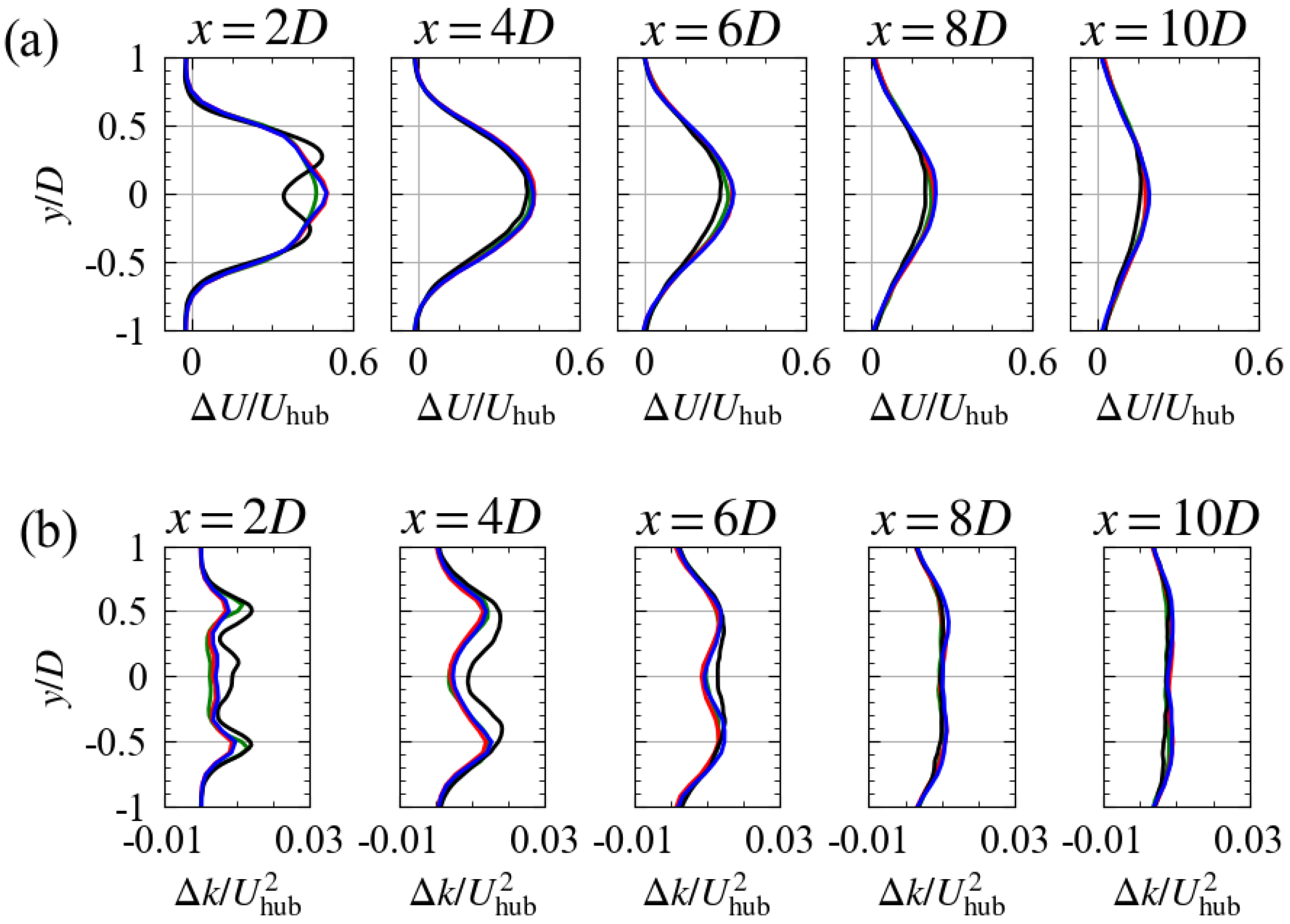

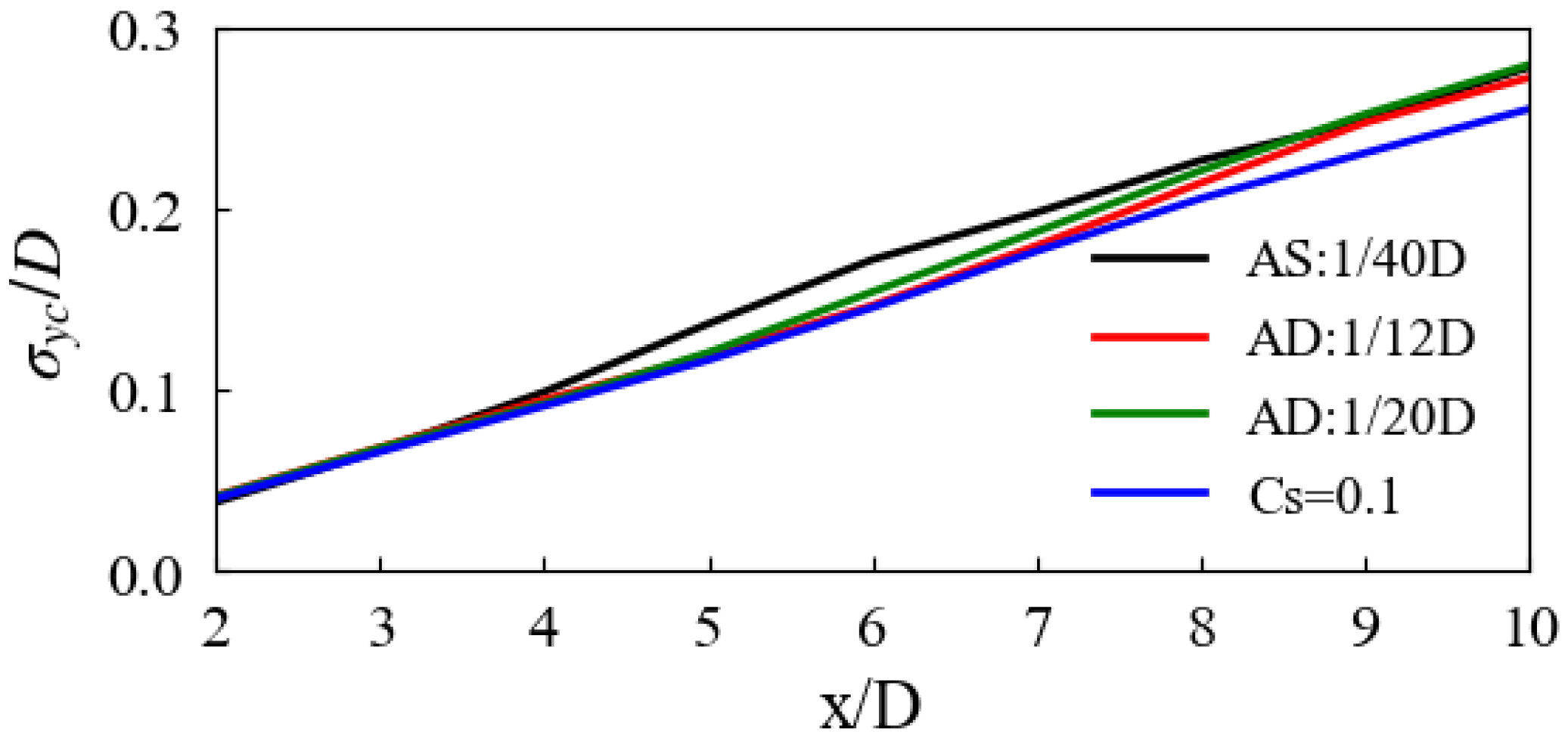
References
- Holechek, J.L.; Geli, H.M.E.; Sawalhah, M.N.; Valdez, R. A Global Assessment: Can Renewable Energy Replace Fossil Fuels by 2050? Sustainability 2022, 14, 4792. [Google Scholar] [CrossRef]
- Li, W.; Xu, S.; Qian, B.; Gao, X.; Zhu, X.; Shi, Z.; Liu, W.; Hu, Q. Large-Scale Wind Turbine’s Load Characteristics Excited by the Wind and Grid in Complex Terrain: A Review. Sustainability 2022, 14, 17051. [Google Scholar] [CrossRef]
- Veers, P.; Dykes, K.; Lantz, E.; Barth, S.; Bottasso, C.L.; Carlson, O.; Clifton, A.; Green, J.; Green, P.; Holttinen, H.; et al. Grand challenges in the science of wind energy. Science 2019, 366, eaau2027. [Google Scholar] [CrossRef]
- Meyers, J.; Bottasso, C.; Dykes, K.; Fleming, P.; Gebraad, P.; Giebel, G.; Göçmen, T.; Van Wingerden, J.W. Wind farm flow control: Prospects and challenges. Wind Energy Sci. 2022, 7, 2271–2306. [Google Scholar] [CrossRef]
- De Cillis, G.; Cherubini, S.; Semeraro, O.; Leonardi, S.; De Palma, P. The influence of incoming turbulence on the dynamic modes of an NREL-5MW wind turbine wake. Renew. Energy 2022, 183, 601–616. [Google Scholar] [CrossRef]
- Zhang, W.; Markfort, C.D.; Porté-Agel, F. Near-wake flow structure downwind of a wind turbine in a turbulent boundary layer. Exp. Fluids 2012, 52, 1219–1235. [Google Scholar] [CrossRef]
- Stein, V.P.; Kaltenbach, H.J. Non-Equilibrium Scaling Applied to the Wake Evolution of a Model Scale Wind Turbine. Energies 2019, 12, 2763. [Google Scholar] [CrossRef]
- Mendoza, V.; Chaudhari, A.; Goude, A. Performance and wake comparison of horizontal and vertical axis wind turbines under varying surface roughness conditions. Wind Energy 2019, 22, 458–472. [Google Scholar] [CrossRef]
- Kethavath, N.N.; Mondal, K.; Ghaisas, N.S. Large-eddy simulation and analytical modeling study of the wake of a wind turbine behind an abrupt rough-to-smooth surface roughness transition. Phys. Fluids 2022, 34, 125117. [Google Scholar] [CrossRef]
- Wu, Y.T.; Porté-Agel, F. Atmospheric turbulence effects on wind-turbine wakes: An LES study. Energies 2012, 5, 5340–5362. [Google Scholar] [CrossRef]
- Yang, X.; Pakula, M.; Sotiropoulos, F. Large-eddy simulation of a utility-scale wind farm in complex terrain. Appl. Energy 2018, 229, 767–777. [Google Scholar] [CrossRef]
- Tobin, N.; Chamorro, L.P. Modulation of turbulence scales passing through the rotor of a wind turbine. J. Turbul. 2019, 20, 21–31. [Google Scholar] [CrossRef]
- Jin, Y.; Liu, H.; Aggarwal, R.; Singh, A.; Chamorro, L.P. Effects of freestream turbulence in a model wind turbine wake. Energies 2016, 9, 830. [Google Scholar] [CrossRef]
- Churchfield, M.J.; Lee, S.; Michalakes, J.; Moriarty, P.J. A numerical study of the effects of atmospheric and wake turbulence on wind turbine dynamics. J. Turbul. 2012, 13, N14. [Google Scholar] [CrossRef]
- Abkar, M.; Porté-Agel, F. Influence of atmospheric stability on wind-turbine wakes: A large-eddy simulation study. Phys. Fluids 2015, 27, 035104. [Google Scholar] [CrossRef]
- Du, B.; Ge, M.; Zeng, C.; Cui, G.; Liu, Y. Influence of atmospheric stability on wind-turbine wakes with a certain hub-height turbulence intensity. Phys. Fluids 2021, 33, 055111. [Google Scholar] [CrossRef]
- Ning, X.; Wan, D. LES Study of Wake Meandering in Different Atmospheric Stabilities and Its Effects on Wind Turbine Aerodynamics. Sustainability 2019, 11, 6939. [Google Scholar] [CrossRef]
- Li, Z.; Yang, X. Large-eddy simulation on the similarity between wakes of wind turbines with different yaw angles. J. Fluid Mech. 2021, 921, A11. [Google Scholar] [CrossRef]
- Li, Z.; Dong, G.; Yang, X. Onset of wake meandering for a floating offshore wind turbine under side-to-side motion. J. Fluid Mech. 2022, 934, A29. [Google Scholar] [CrossRef]
- Yang, D.; Meneveau, C.; Shen, L. Effect of downwind swells on offshore wind energy harvesting—A large-eddy simulation study. Renew. Energy 2014, 70, 11–23. [Google Scholar] [CrossRef]
- Stevens, R.J.; Martínez-Tossas, L.A.; Meneveau, C. Comparison of wind farm large eddy simulations using actuator disk and actuator line models with wind tunnel experiments. Renew. Energy 2018, 116, 470–478. [Google Scholar] [CrossRef]
- Bastankhah, M.; Porté-Agel, F. Wind tunnel study of the wind turbine interaction with a boundary-layer flow: Upwind region, turbine performance, and wake region. Phys. Fluids 2017, 29, 065105. [Google Scholar] [CrossRef]
- Lignarolo, L.; Ragni, D.; Krishnaswami, C.; Chen, Q.; Ferreira, C.S.; Van Bussel, G. Experimental analysis of the wake of a horizontal-axis wind-turbine model. Renew. Energy 2014, 70, 31–46. [Google Scholar] [CrossRef]
- Abraham, A.; Hong, J. Characterization of atmospheric coherent structures and their impact on a utility-scale wind turbine. Flow 2022, 2, E5. [Google Scholar] [CrossRef]
- Hong, J.; Toloui, M.; Chamorro, L.P.; Guala, M.; Howard, K.; Riley, S.; Tucker, J.; Sotiropoulos, F. Natural snowfall reveals large-scale flow structures in the wake of a 2.5-MW wind turbine. Nat. Commun. 2014, 5, 4216. [Google Scholar] [CrossRef]
- Hong, J.; Abraham, A. Snow-powered research on utility-scale wind turbine flows. Acta Mech. Sin. 2020, 36, 339–355. [Google Scholar] [CrossRef]
- Elgendi, M.; AlMallahi, M.; Abdelkhalig, A.; Selim, M.Y. A Review of Wind Turbines in Complex Terrain. Int. J. Thermofluids 2023, 17, 100289. [Google Scholar] [CrossRef]
- Zendehbad, M.; Chokani, N.; Abhari, R.S. Impact of forested fetch on energy yield and maintenance of wind turbines. Renew. Energy 2016, 96, 548–558. [Google Scholar] [CrossRef]
- Nebenführ, B.; Davidson, L. Prediction of wind-turbine fatigue loads in forest regions based on turbulent LES inflow fields. Wind Energy 2017, 20, 1003–1015. [Google Scholar] [CrossRef]
- Agafonova, O.; Avramenko, A.; Chaudhari, A.; Hellsten, A. Effects of the canopy created velocity inflection in the wake development in a large wind turbine array. Proc. J. Phys. Conf. Ser. 2016, 753, 032001. [Google Scholar] [CrossRef]
- Chougule, A.; Mann, J.; Segalini, A.; Dellwik, E. Spectral tensor parameters for wind turbine load modeling from forested and agricultural landscapes. Wind Energy 2015, 18, 469–481. [Google Scholar] [CrossRef]
- Adedipe, T.A.; Chaudhari, A.; Kauranne, T. Impact of different forest densities on atmospheric boundary-layer development and wind-turbine wake. Wind Energy 2020, 23, 1165–1180. [Google Scholar] [CrossRef]
- Cheng, S.; Elgendi, M.; Lu, F.; Chamorro, L.P. On the Wind Turbine Wake and Forest Terrain Interaction. Energies 2021, 14, 7204. [Google Scholar] [CrossRef]
- Belcher, S.E.; Harman, I.N.; Finnigan, J.J. The wind in the willows: Flows in forest canopies in complex terrain. Annu. Rev. Fluid Mech. 2012, 44, 479–504. [Google Scholar] [CrossRef]
- Matsfelt, J.; Davidson, L. Large eddy simulation: A study of clearings in forest and their effect on wind turbines. Wind Energy 2021, 24, 1388–1406. [Google Scholar] [CrossRef]
- Porté-Agel, F.; Bastankhah, M.; Shamsoddin, S. Wind-turbine and wind-farm flows: A review. Bound. Layer Meteorol. 2020, 174, 1–59. [Google Scholar] [CrossRef] [PubMed]
- Yang, X.; Sotiropoulos, F.; Conzemius, R.J.; Wachtler, J.N.; Strong, M.B. Large-eddy simulation of turbulent flow past wind turbines/farms: The Virtual Wind Simulator (VWiS). Wind Energy 2015, 18, 2025–2045. [Google Scholar] [CrossRef]
- Yang, X.; Milliren, C.; Kistner, M.; Hogg, C.; Marr, J.; Shen, L.; Sotiropoulos, F. High-fidelity simulations and field measurements for characterizing wind fields in a utility-scale wind farm. Appl. Energy 2021, 281, 116115. [Google Scholar] [CrossRef]
- Yang, X.; Sotiropoulos, F. A new class of actuator surface models for wind turbines. Wind Energy 2018, 21, 285–302. [Google Scholar] [CrossRef]
- Germano, M.; Piomelli, U.; Moin, P.; Cabot, W.H. A dynamic subgrid-scale eddy viscosity model. Phys. Fluids A Fluid Dyn. 1991, 3, 1760–1765. [Google Scholar] [CrossRef]
- Li, Z.; Yang, X. Evaluation of actuator disk model relative to actuator surface model for predicting utility-scale wind turbine wakes. Energies 2020, 13, 3574. [Google Scholar] [CrossRef]
- Yang, X.; Khosronejad, A.; Sotiropoulos, F. Large-eddy simulation of a hydrokinetic turbine mounted on an erodible bed. Renew. Energy 2017, 113, 1419–1433. [Google Scholar] [CrossRef]
- Foti, D.; Yang, X.; Campagnolo, F.; Maniaci, D.; Sotiropoulos, F. Wake meandering of a model wind turbine operating in two different regimes. Phys. Rev. Fluids 2018, 3, 054607. [Google Scholar] [CrossRef]
- Kang, S.; Yang, X.; Sotiropoulos, F. On the onset of wake meandering for an axial flow turbine in a turbulent open channel flow. J. Fluid Mech. 2014, 744, 376–403. [Google Scholar] [CrossRef]
- Foti, D.; Yang, X.; Guala, M.; Sotiropoulos, F. Wake meandering statistics of a model wind turbine: Insights gained by large eddy simulations. Phys. Rev. Fluids 2016, 1, 044407. [Google Scholar] [CrossRef]
- Chawdhary, S.; Hill, C.; Yang, X.; Guala, M.; Corren, D.; Colby, J.; Sotiropoulos, F. Wake characteristics of a TriFrame of axial-flow hydrokinetic turbines. Renew. Energy 2017, 109, 332–345. [Google Scholar] [CrossRef]
- Yang, X.; Sotiropoulos, F. LES investigation of infinite staggered wind-turbine arrays. Proc. J. Phys. Conf. Ser. 2014, 555, 012109. [Google Scholar] [CrossRef]
- Dong, G.; Li, Z.; Qin, J.; Yang, X. How far the wake of a wind farm can persist for? Theor. Appl. Mech. Lett. 2022, 12, 100314. [Google Scholar] [CrossRef]
- Yang, X.; Sotiropoulos, F. On the predictive capabilities of LES-actuator disk model in simulating turbulence past wind turbines and farms. In Proceedings of the 2013 American Control Conference, Washington, DC, USA, 17–19 June 2013; pp. 2878–2883. [Google Scholar]
- Foti, D.; Yang, X.; Shen, L.; Sotiropoulos, F. Effect of wind turbine nacelle on turbine wake dynamics in large wind farms. J. Fluid Mech. 2019, 869, 1–26. [Google Scholar] [CrossRef]
- Breton, S.P.; Sumner, J.; Sørensen, J.N.; Hansen, K.S.; Sarmast, S.; Ivanell, S. A survey of modelling methods for high-fidelity wind farm simulations using large eddy simulation. Philos. Trans. R. Soc. A Math. Phys. Eng. Sci. 2017, 375, 20160097. [Google Scholar] [CrossRef]
- Li, Z.; Liu, X.; Yang, X. Review of Turbine Parameterization Models for Large-Eddy Simulation of Wind Turbine Wakes. Energies 2022, 15, 6533. [Google Scholar] [CrossRef]
- Adedipe, T.; Chaudhari, A.; Hellsten, A.; Kauranne, T.; Haario, H. Numerical Investigation on the Effects of Forest Heterogeneity on Wind-Turbine Wake. Energies 2022, 15, 1896. [Google Scholar] [CrossRef]
- Schröttle, J.; Piotrowski, Z.; Gerz, T.; Englberger, A.; Dörnbrack, A. Wind turbine wakes in forest and neutral plane wall boundary layer large-eddy simulations. Proc. J. Phys. Conf. Ser. 2016, 753, 032058. [Google Scholar] [CrossRef]
- Mason, P.J.; Thomson, D. Large-eddy simulations of the neutral-static-stability planetary boundary layer. Q. J. R. Meteorol. Soc. 1987, 113, 413–443. [Google Scholar] [CrossRef]
- Agafonova, O. A Numerical Study of Forest Influences on the Atmospheric Boundary Layer and Wind Turbines. Ph.D. Thesis, Lappeenranta University of Technology, Lappeenranta, Finland, 2017. [Google Scholar]
- Nebenführ, B.; Davidson, L. Large-eddy simulation study of thermally stratified canopy flow. Bound. Layer Meteorol. 2015, 156, 253–276. [Google Scholar] [CrossRef]
- Shaw, R.H.; Patton, E.G. Canopy element influences on resolved-and subgrid-scale energy within a large-eddy simulation. Agric. For. Meteorol. 2003, 115, 5–17. [Google Scholar] [CrossRef]
- Ma, Y.; Liu, H.; Banerjee, T.; Katul, G.G.; Yi, C.; Pardyjak, E.R. The effects of canopy morphology on flow over a two-dimensional isolated ridge. J. Geophys. Res. Atmos. 2020, 125, e2020JD033027. [Google Scholar] [CrossRef]
- Mohr, M.; Arnqvist, J.; Abedi, H.; Alfredsson, H.; Baltscheffsky, M.; Bergström, H.; Carlén, I.; Davidson, L.; Segalini, A.; Söderberg, S. Wind Power in Forests II: Forest Wind; Energiforsk: Stockholm, Sweden, 2018. [Google Scholar]
- Abedi, H.; Sarkar, S.; Johansson, H. Numerical modelling of neutral atmospheric boundary layer flow through heterogeneous forest canopies in complex terrain (a case study of a Swedish wind farm). Renew. Energy 2021, 180, 806–828. [Google Scholar] [CrossRef]
- Shao, X.; Santasmasas, M.C.; Xue, X.; Niu, J.; Davidson, L.; Revell, A.J.; Yao, H.D. Near-wall modeling of forests for atmosphere boundary layers using lattice Boltzmann method on GPU. Eng. Appl. Comput. Fluid Mech. 2022, 16, 2142–2155. [Google Scholar] [CrossRef]
- Yue, W.; Meneveau, C.; Parlange, M.B.; Zhu, W.; Kang, H.S.; Katz, J. Turbulent kinetic energy budgets in a model canopy: Comparisons between LES and wind-tunnel experiments. Environ. Fluid Mech. 2008, 8, 73–95. [Google Scholar] [CrossRef]
- Chen, B.; Chamecki, M. Turbulent kinetic energy budgets over gentle topography covered by forests. J. Atmos. Sci. 2023, 80, 91–109. [Google Scholar] [CrossRef]
- Turner V, J.J.; Wosnik, M. Wake meandering in a model wind turbine array in a high Reynolds number turbulent boundary layer. Proc. J. Phys. Conf. Ser. 2020, 1452, 012073. [Google Scholar] [CrossRef]
- Foti, D.; Yang, X.; Sotiropoulos, F. Similarity of wake meandering for different wind turbine designs for different scales. J. Fluid Mech. 2018, 842, 5–25. [Google Scholar] [CrossRef]
- Mao, X.; Sørensen, J. Far-wake meandering induced by atmospheric eddies in flow past a wind turbine. J. Fluid Mech. 2018, 846, 190–209. [Google Scholar] [CrossRef]
- Gupta, V.; Wan, M. Low-order modelling of wake meandering behind turbines. J. Fluid Mech. 2019, 877, 534–560. [Google Scholar] [CrossRef]
- Sarmast, S.; Dadfar, R.; Mikkelsen, R.F.; Schlatter, P.; Ivanell, S.; Sørensen, J.N.; Henningson, D.S. Mutual inductance instability of the tip vortices behind a wind turbine. J. Fluid Mech. 2014, 755, 705–731. [Google Scholar] [CrossRef]
- Larsen, G.C.; Aagaard Madsen, H.; Bingöl, F. Dynamic Wake Meandering Modeling; Risoe National Lab., DTU: Roskilde, Denmark, 2007. [Google Scholar]
- Rinker, J.M.; Soto Sagredo, E.; Bergami, L. The Importance of wake meandering on wind turbine fatigue loads in wake. Energies 2021, 14, 7313. [Google Scholar] [CrossRef]
- Yang, X.; Sotiropoulos, F. A Review on the Meandering of Wind Turbine Wakes. Energies 2019, 12, 4725. [Google Scholar] [CrossRef]
- Bastankhah, M. Interaction of Atmospheric Boundary Layer Flow with Wind Turbines; Technical Report; EPFL: Lausanne, Switzerland, 2017. [Google Scholar]
- Thess, A.D.; Lengsfeld, P. Side Effects of Wind Energy: Review of Three Topics—Status and Open Questions. Sustainability 2022, 14, 16186. [Google Scholar] [CrossRef]
- Colafranceschi, D.; Sala, P.; Manfredi, F. Nature of the wind, the culture of the landscape: Toward an energy sustainability project in Catalonia. Sustainability 2021, 13, 7110. [Google Scholar] [CrossRef]
- van der Waal, E.C.; van der Windt, H.J.; Botma, R.; van Oost, E.C. Being a better neighbor: A value-based perspective on negotiating acceptability of locally-owned wind projects. Sustainability 2020, 12, 8767. [Google Scholar] [CrossRef]
- Ansys Fluent. Ansys Fluent Theory Guide; Ansys Inc.: Canonsburg, PA, USA, 2011; Volume 15317, pp. 724–746. [Google Scholar]
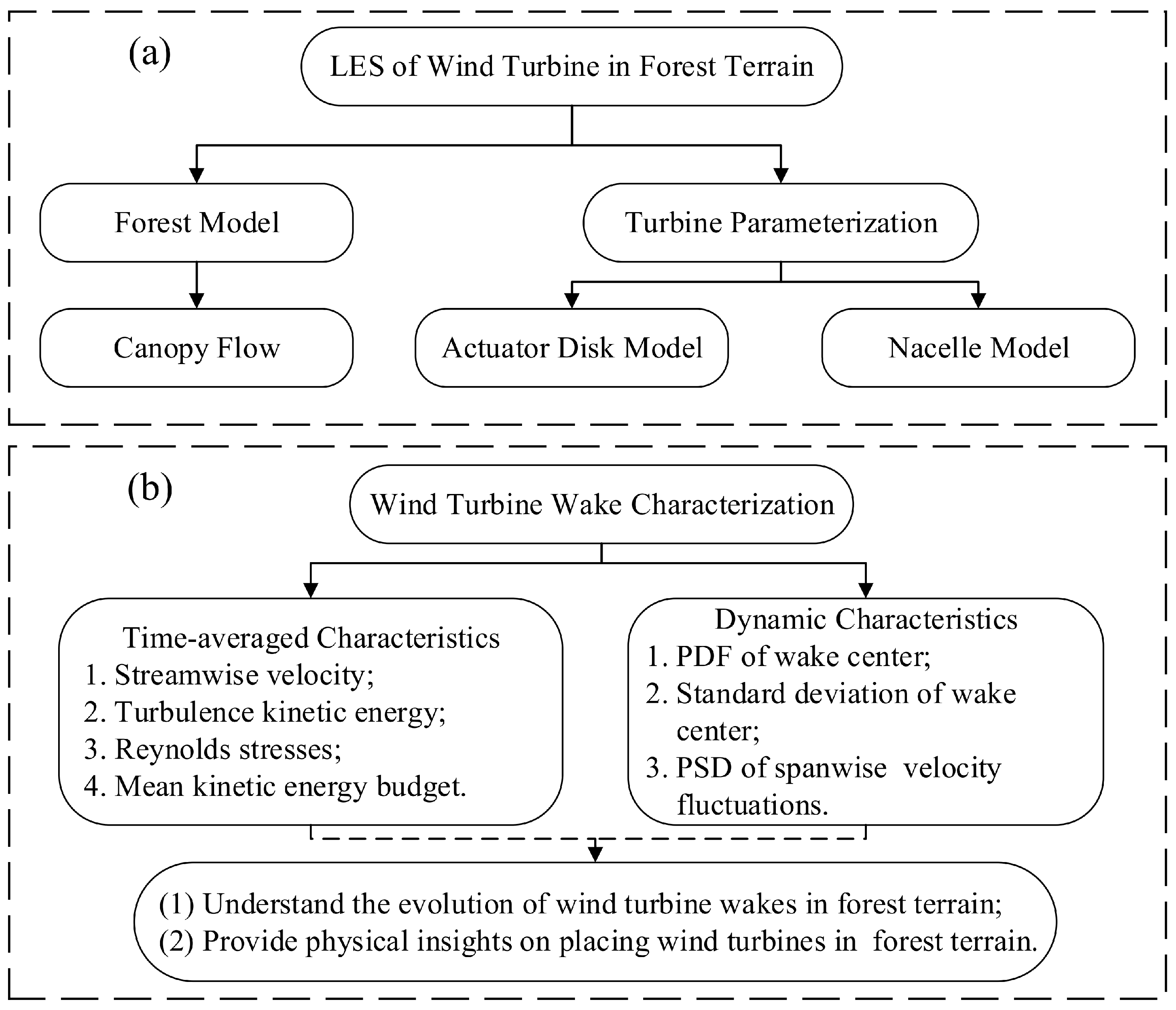
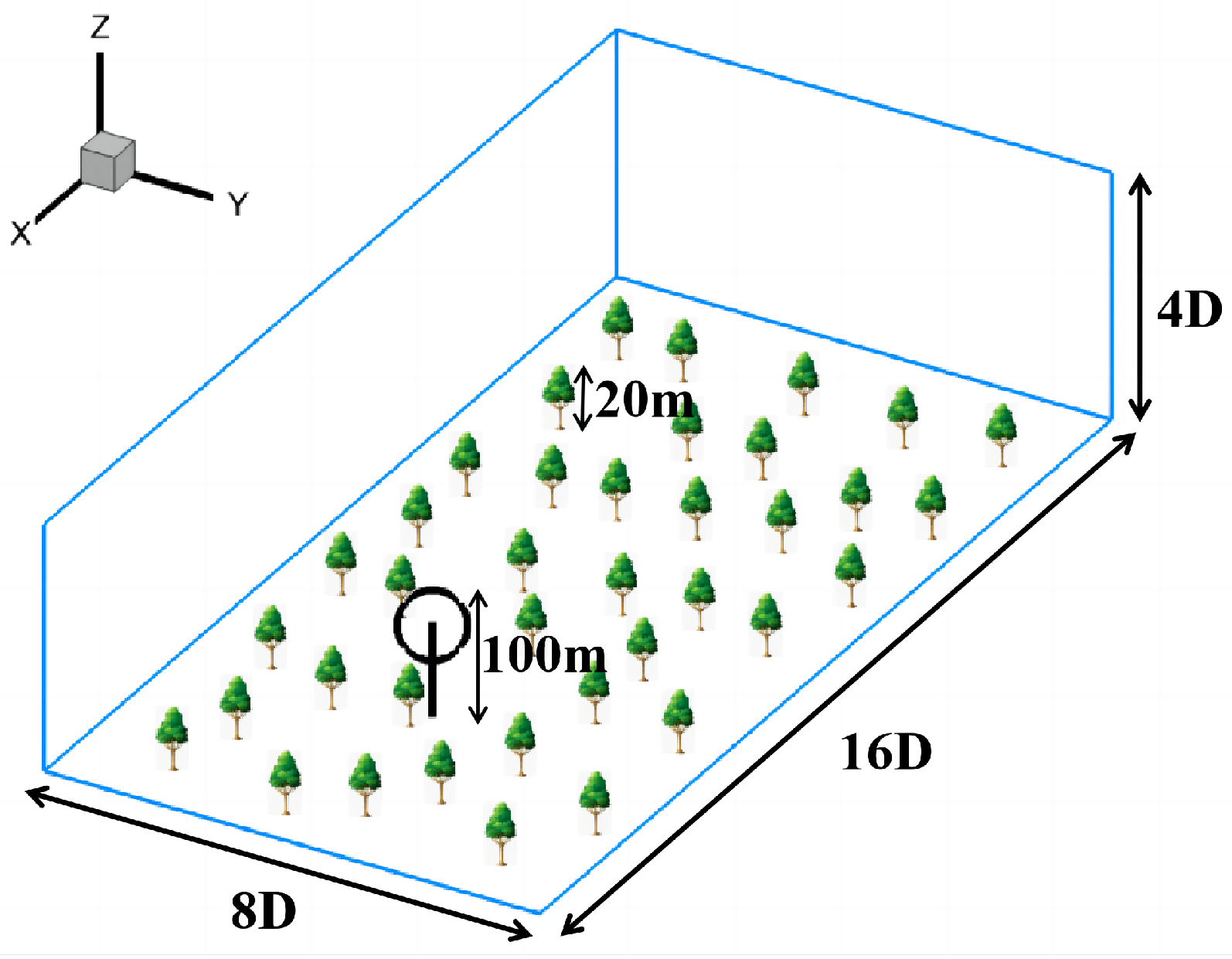
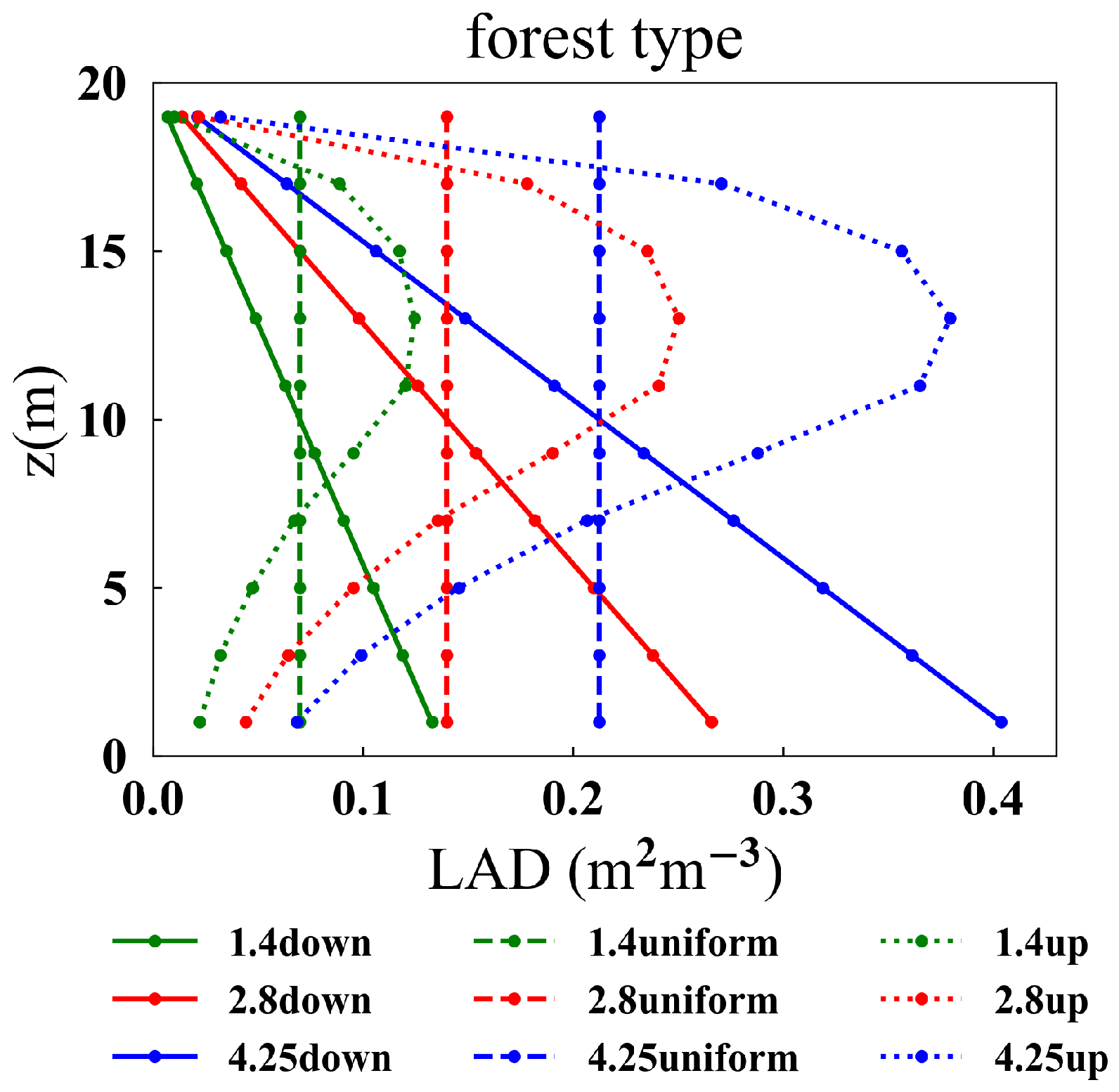

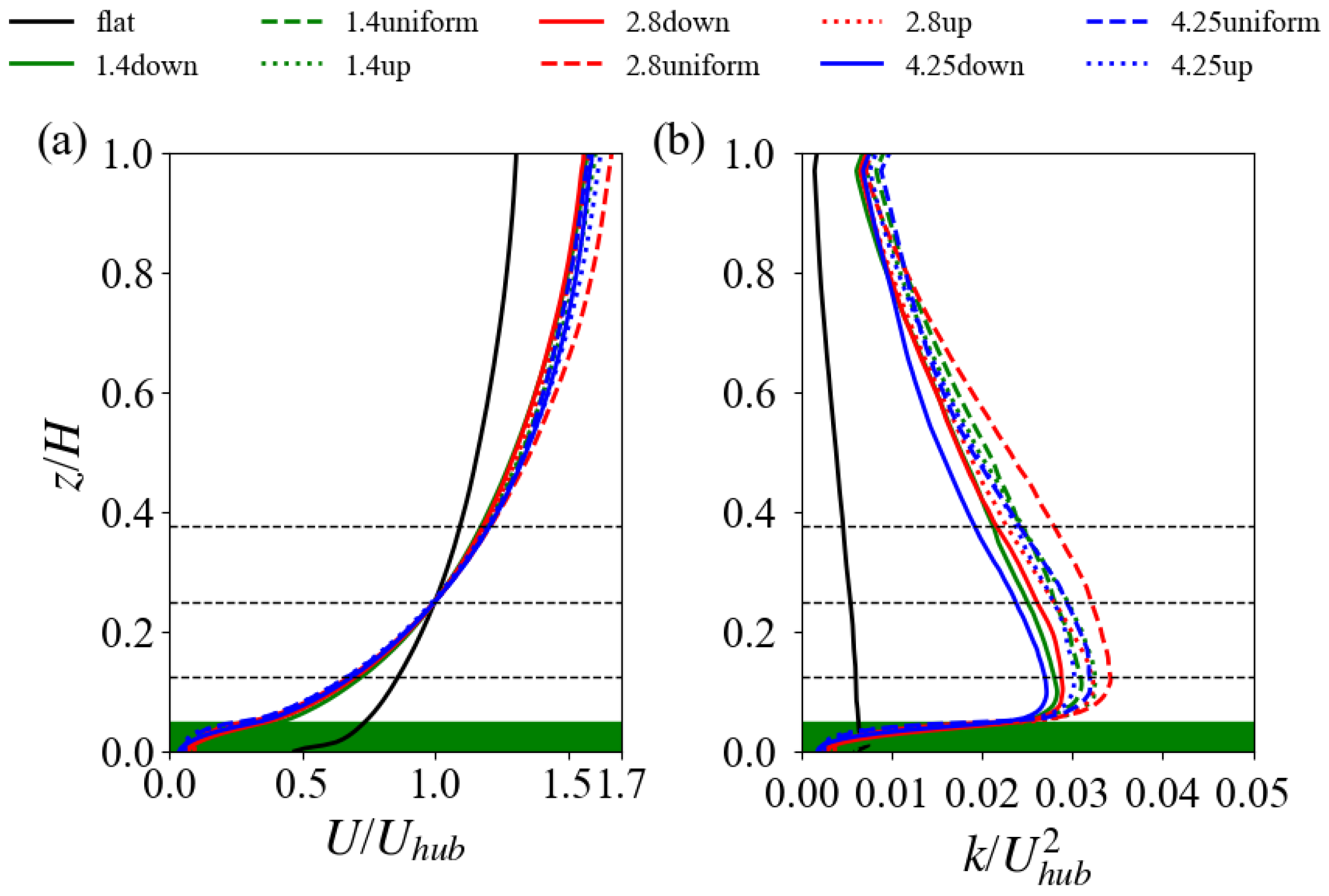
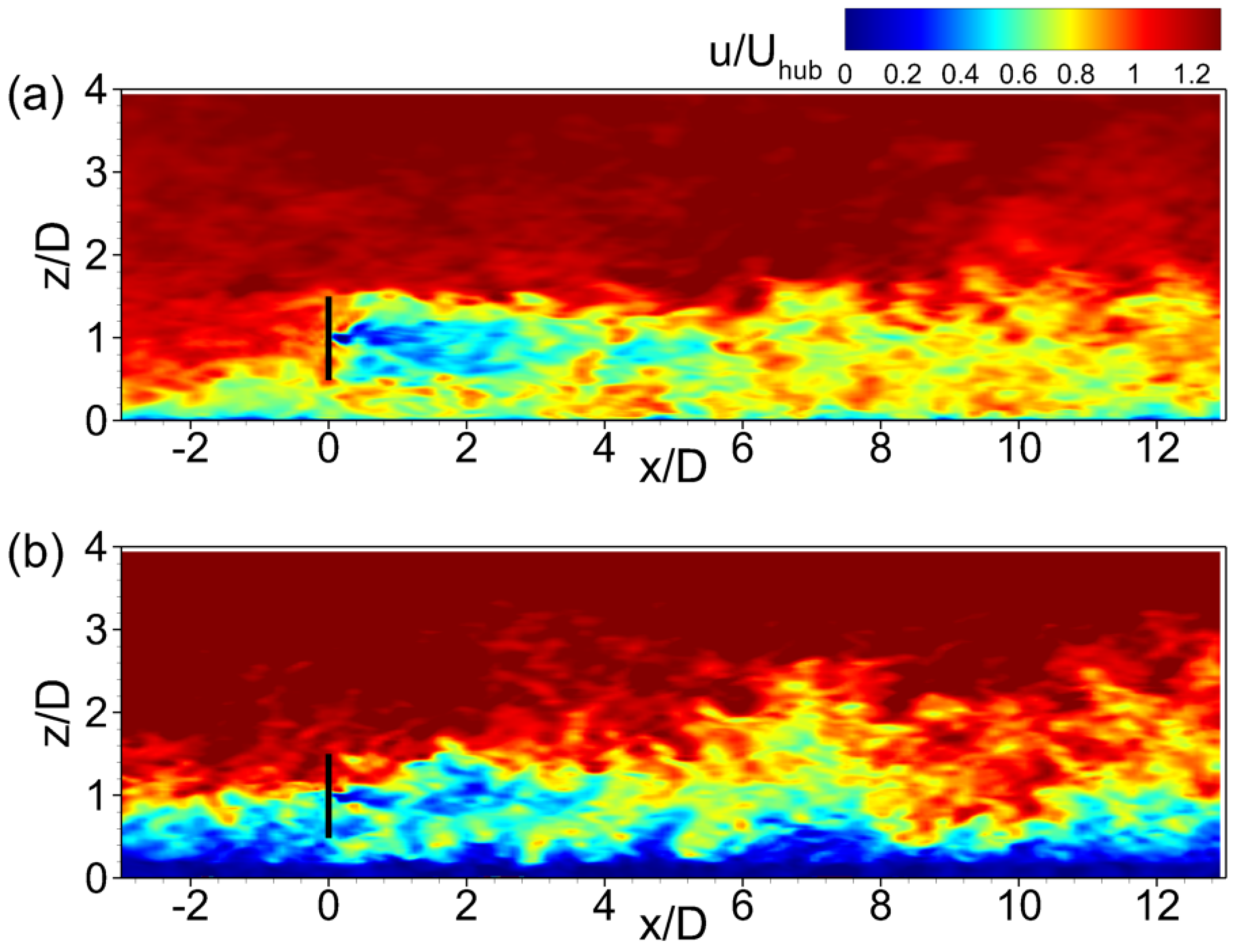
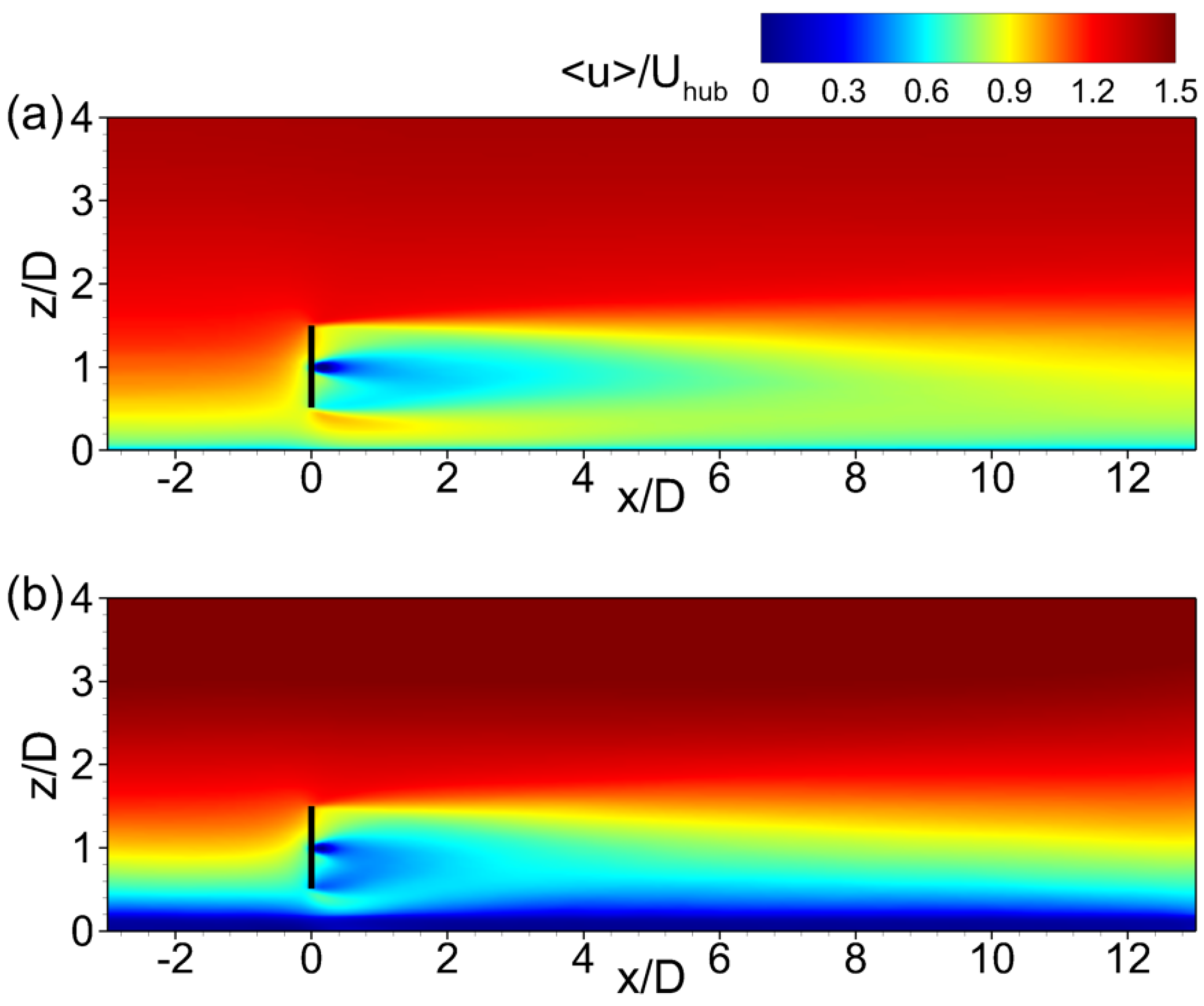
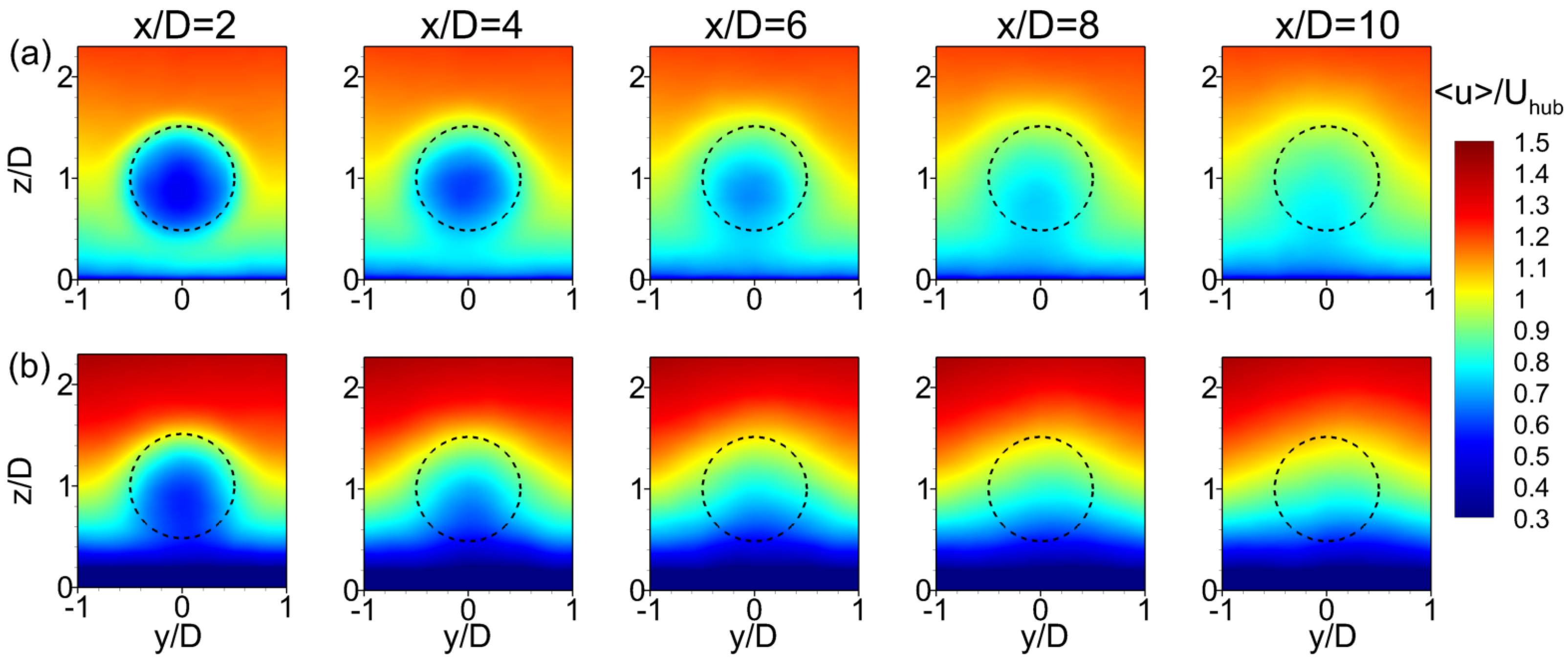

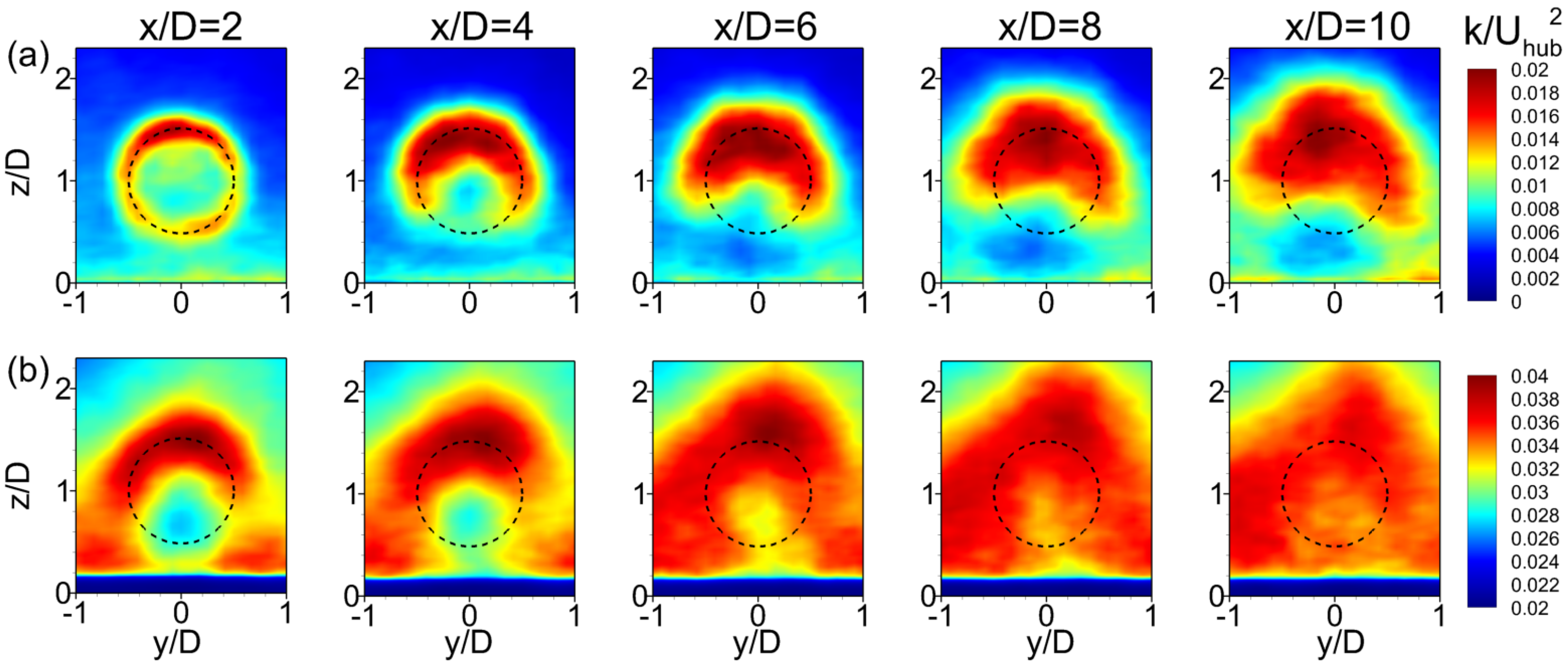
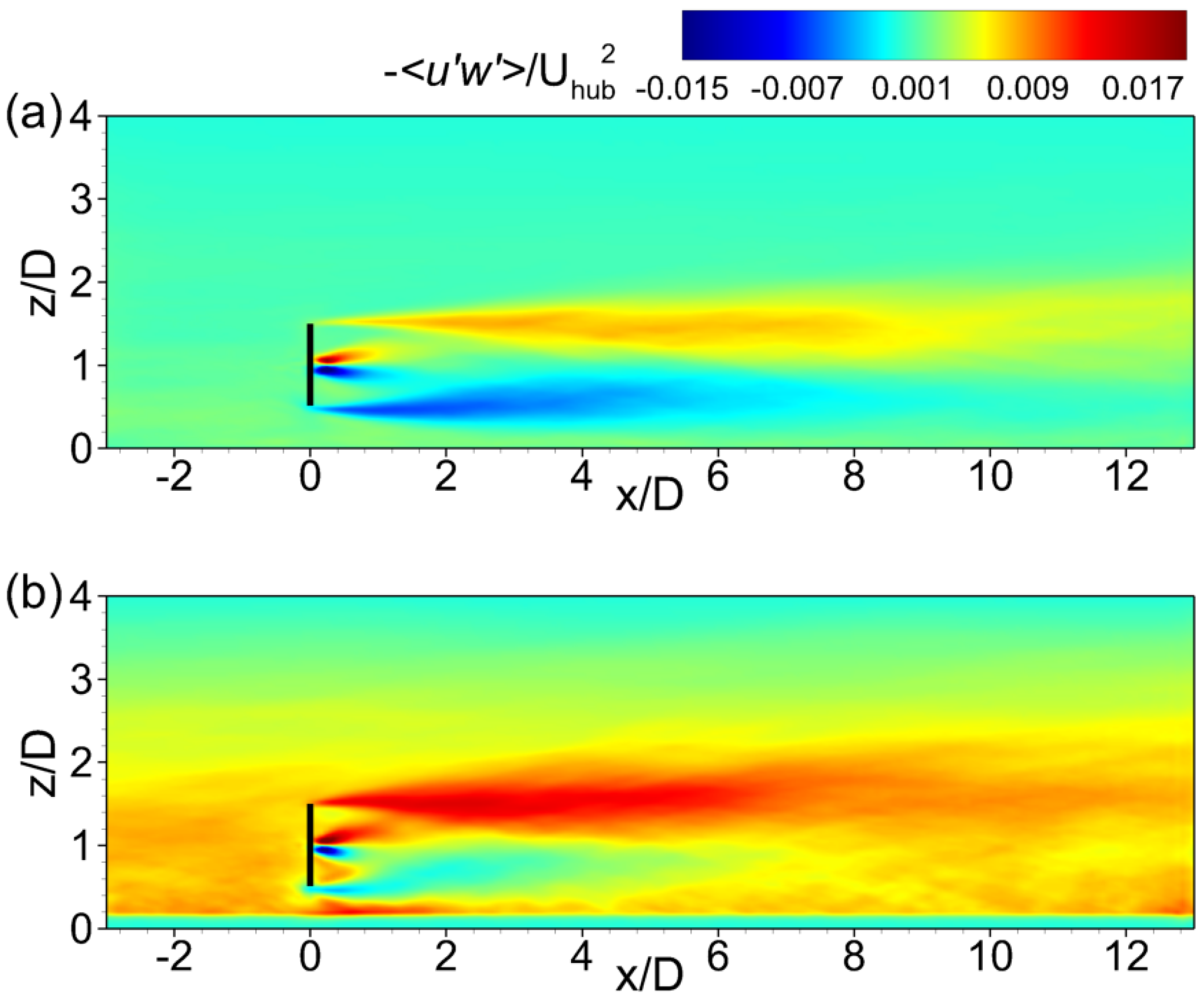

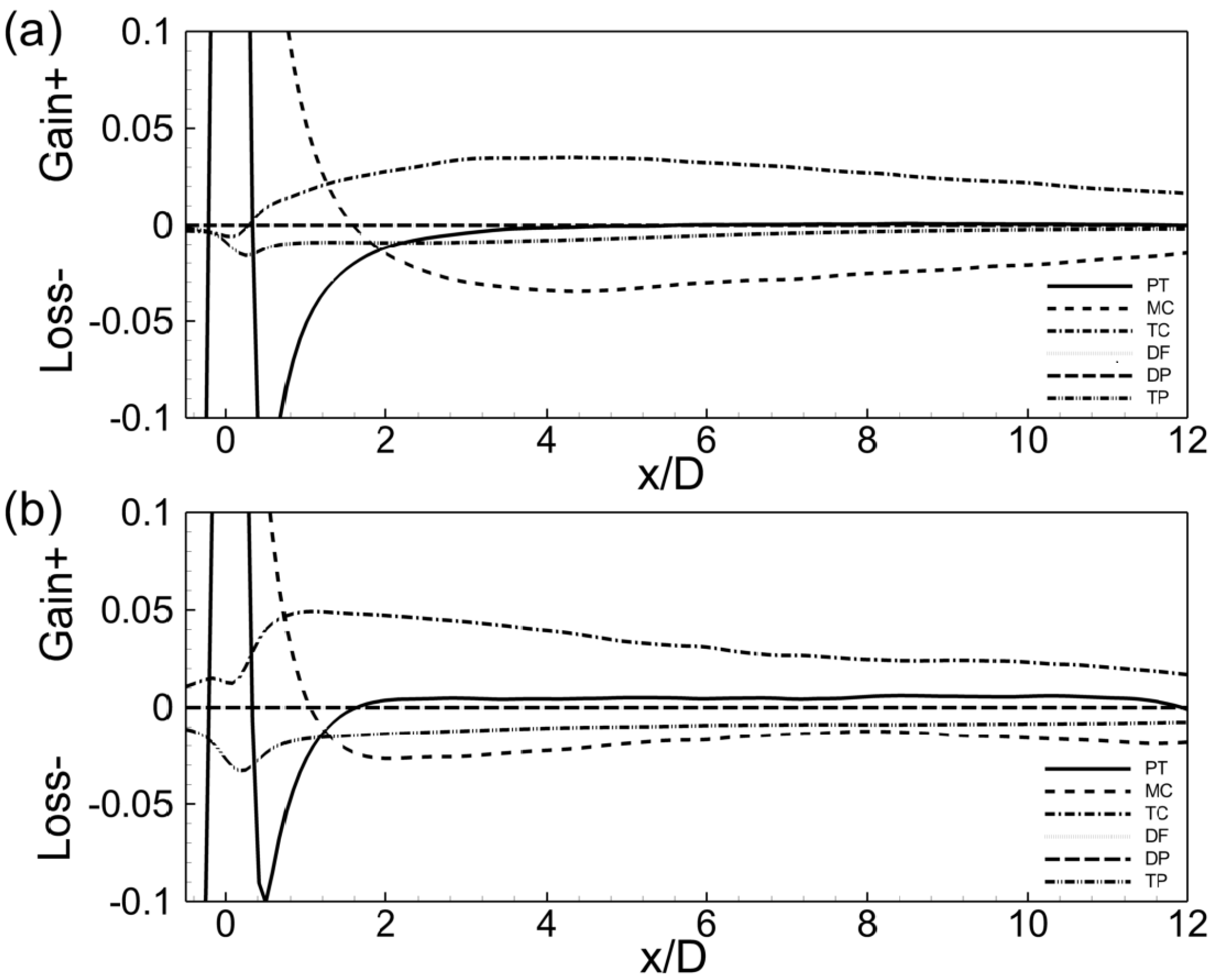

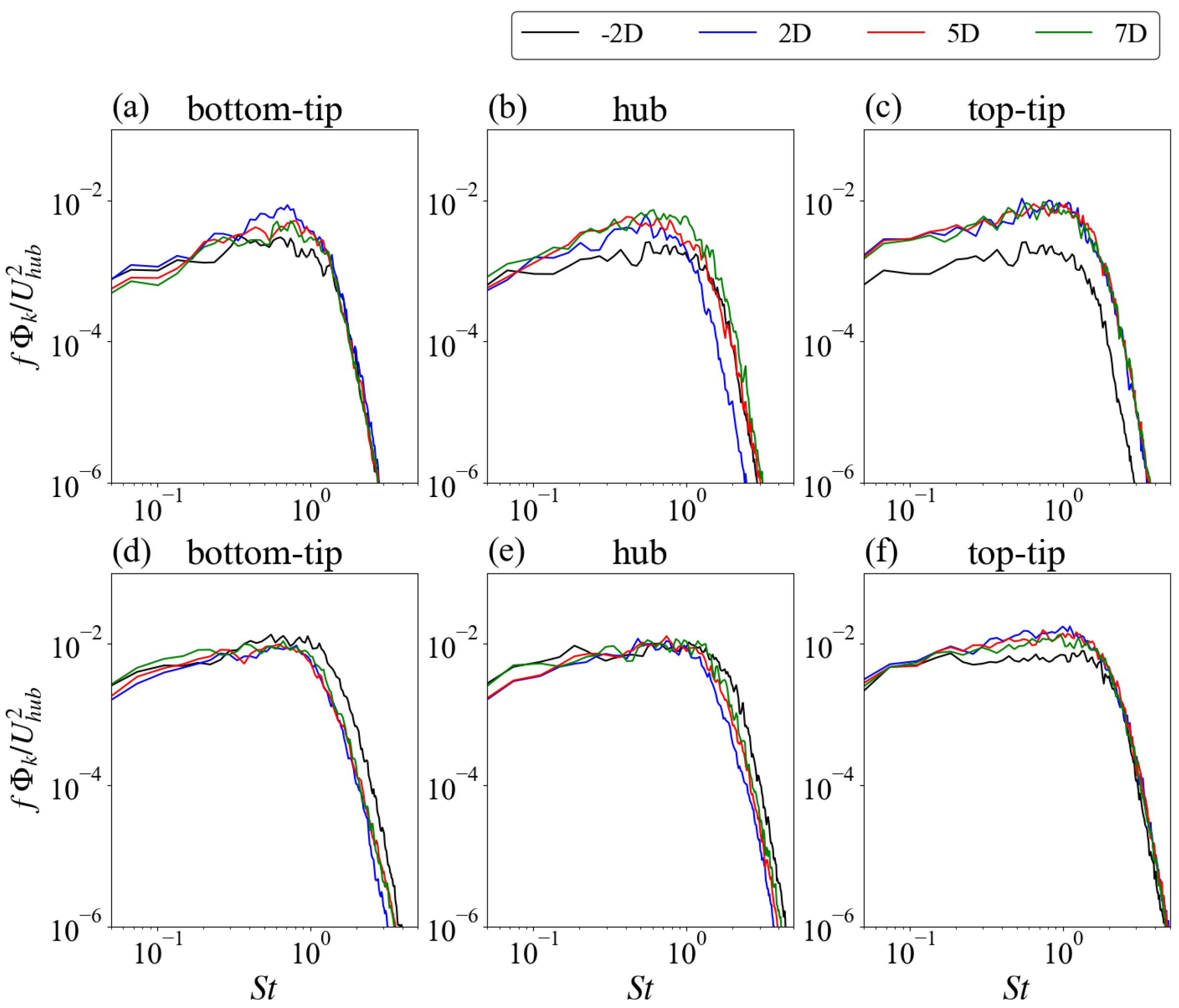
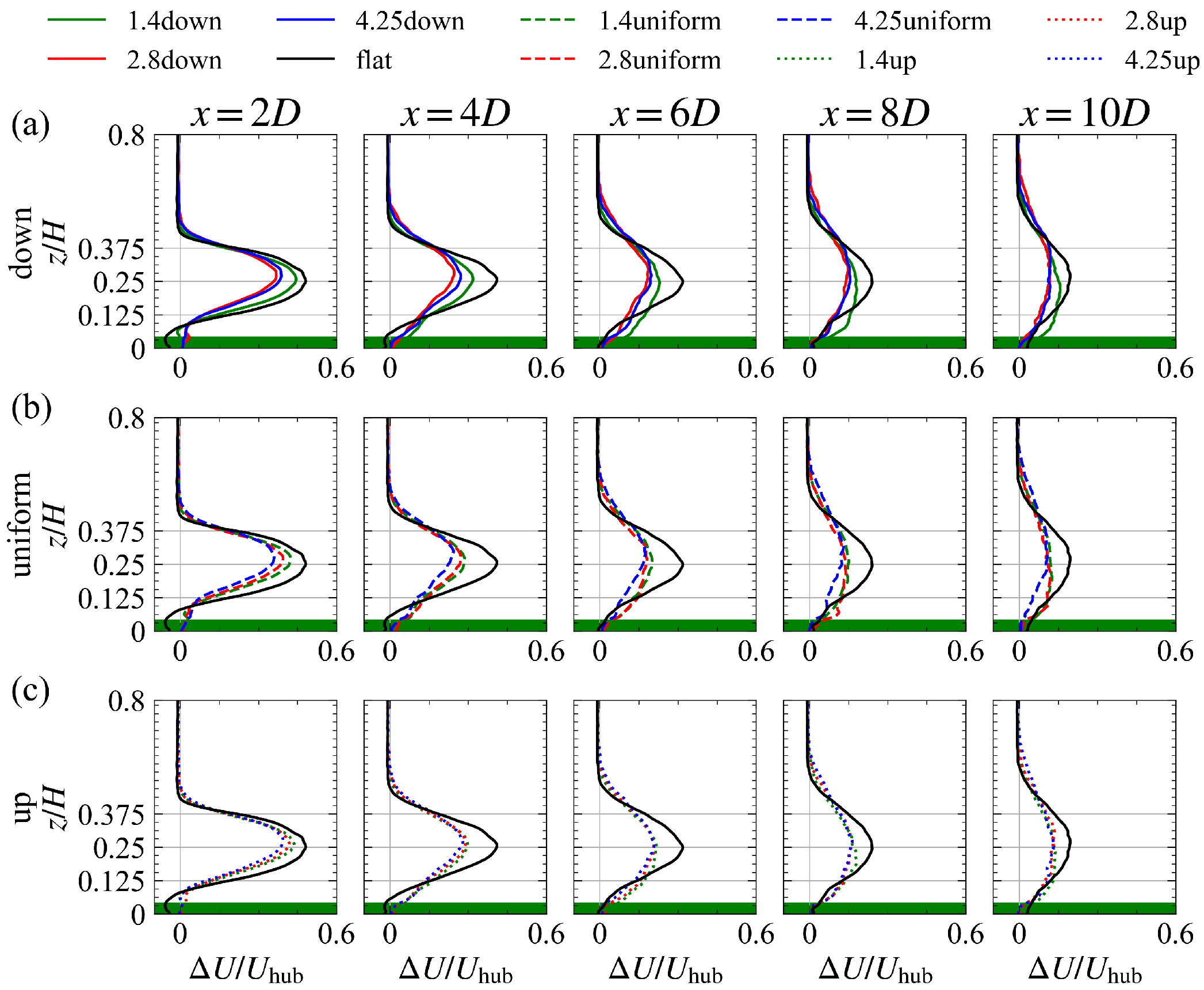
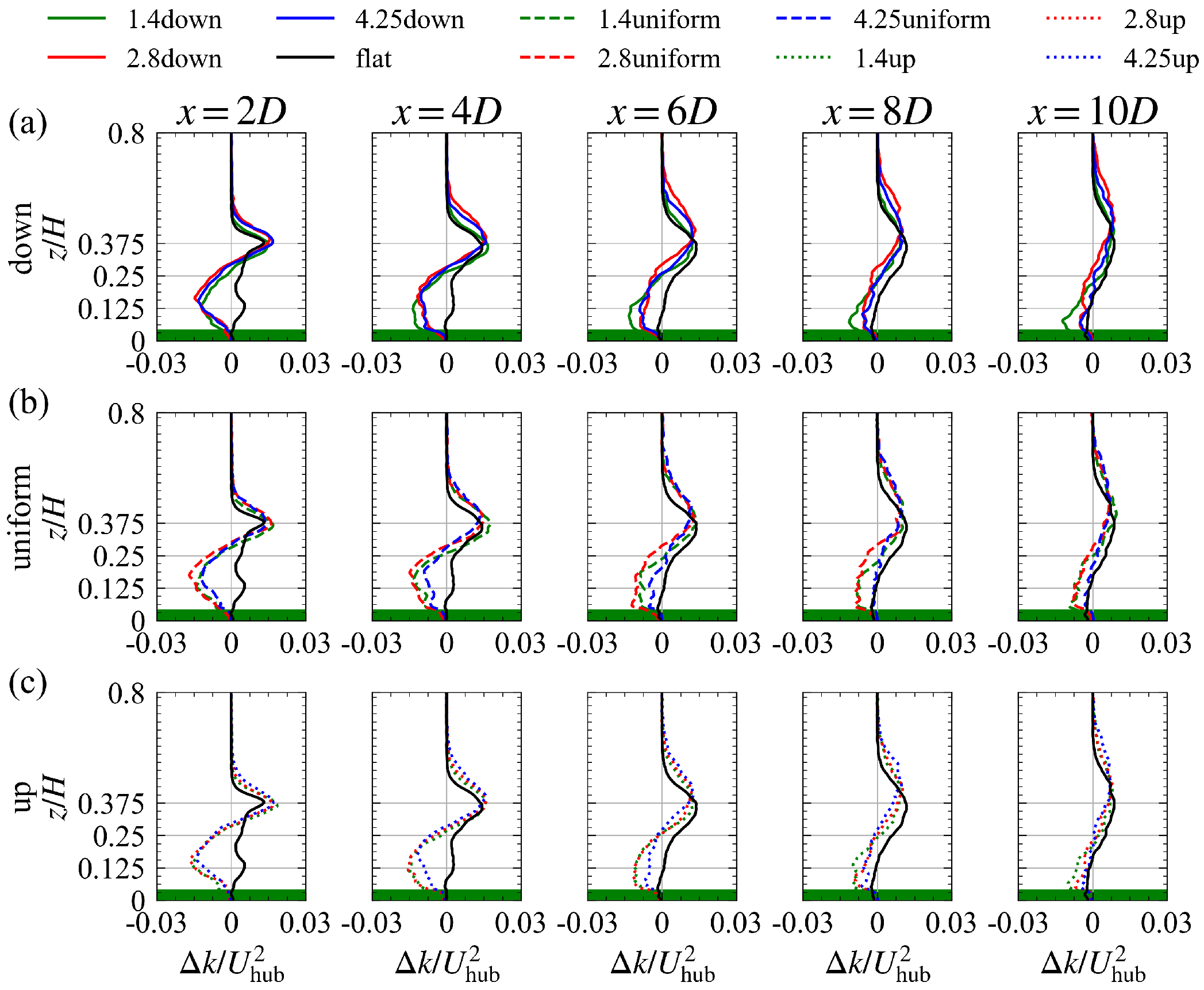
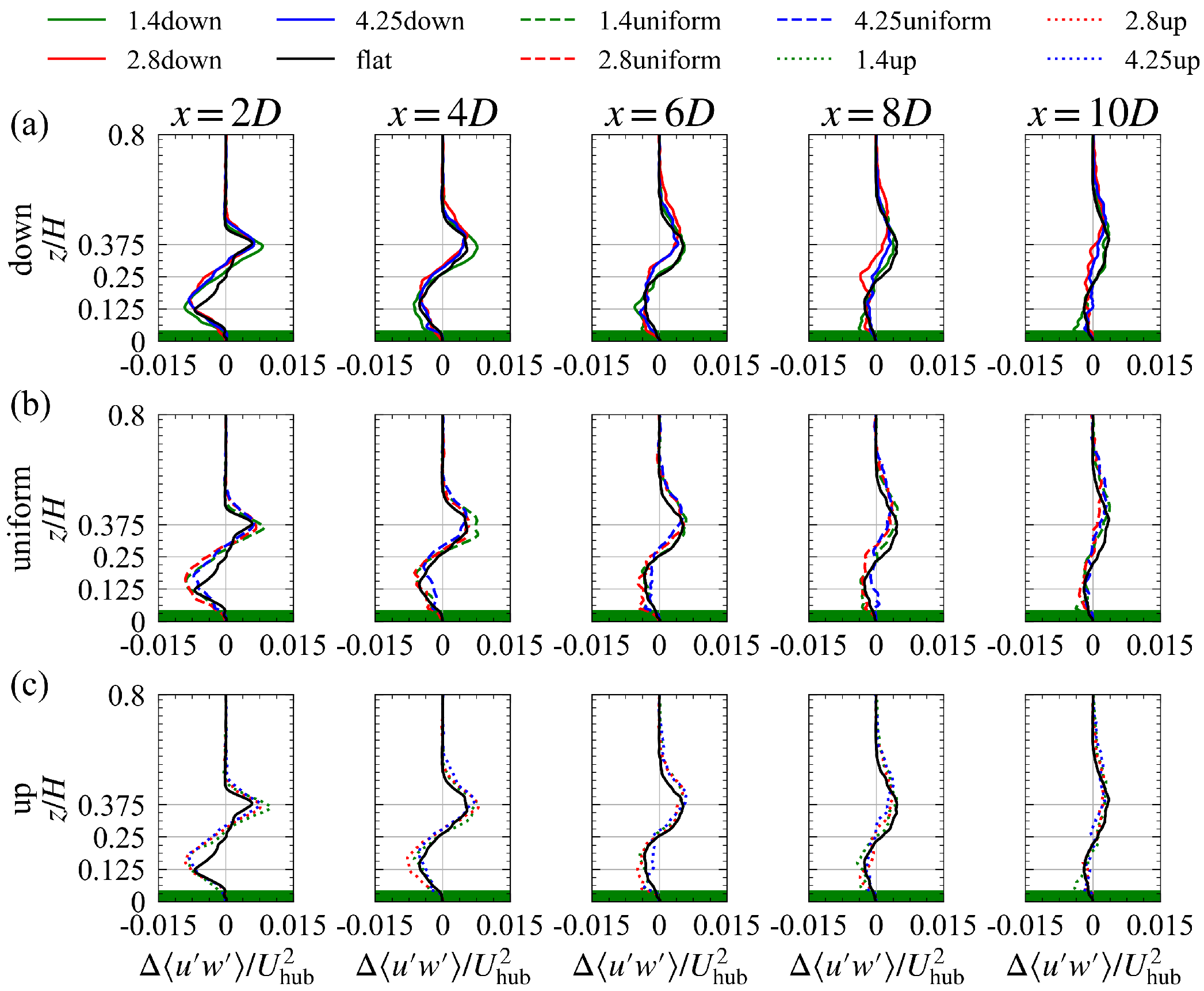
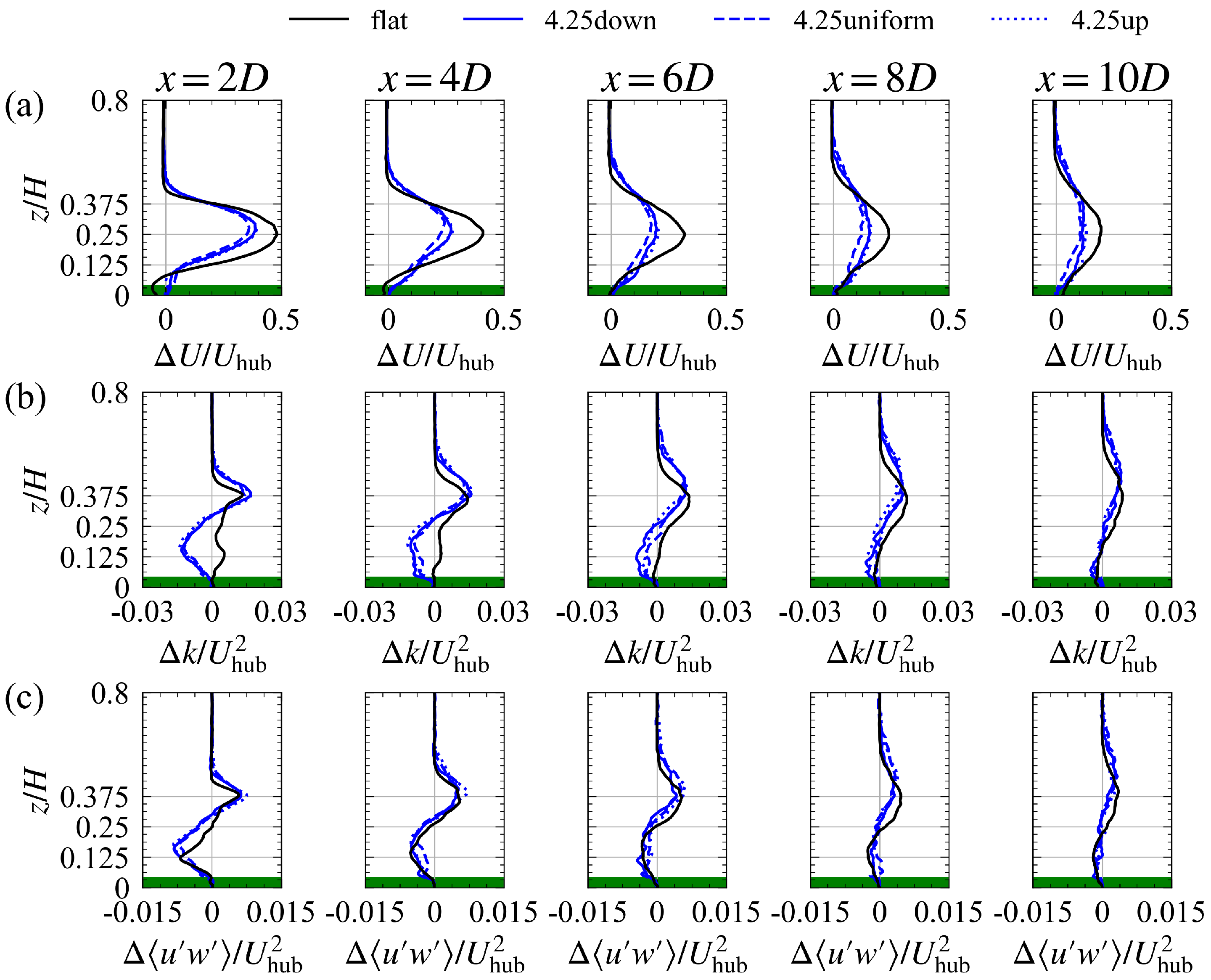
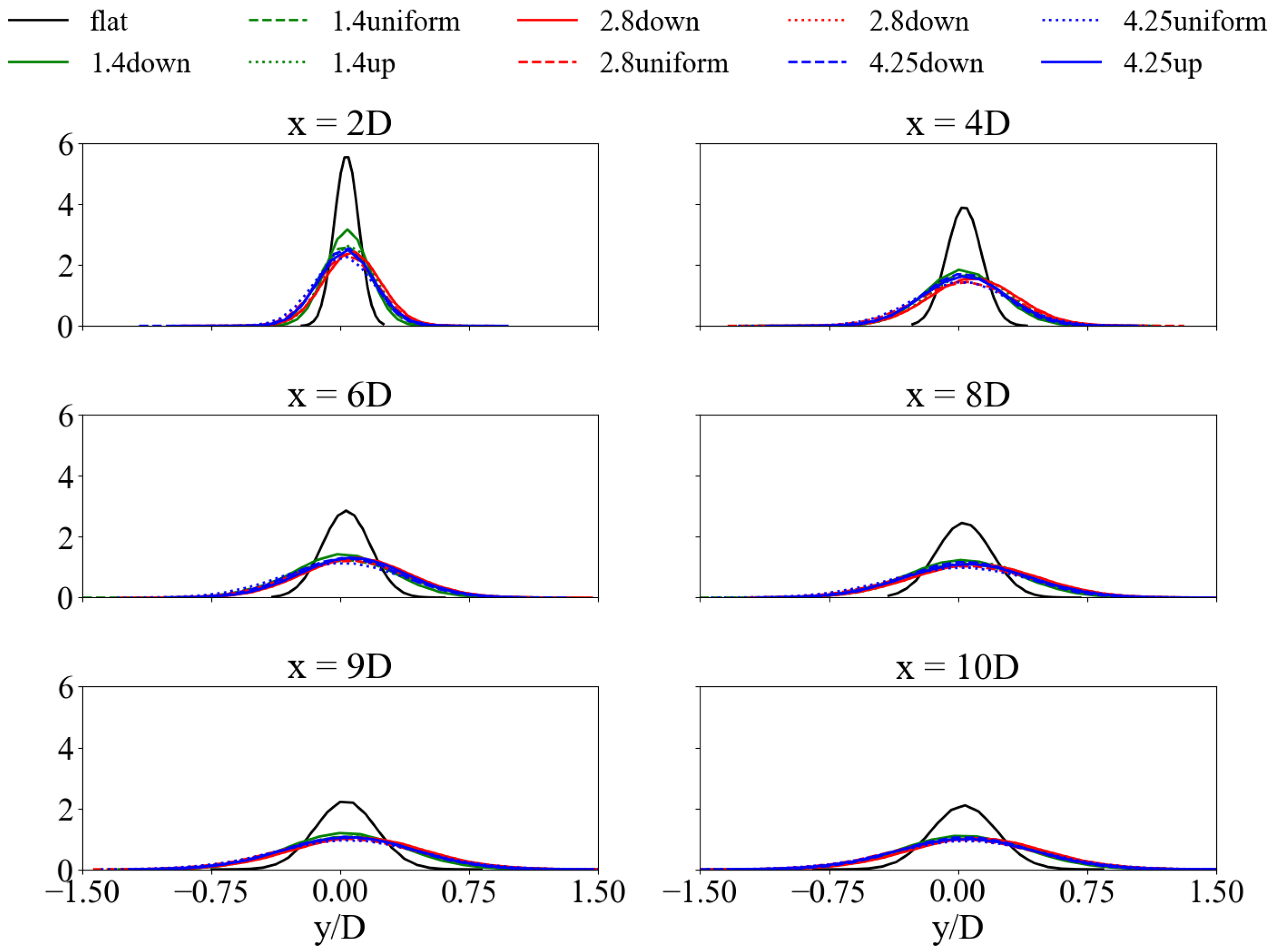
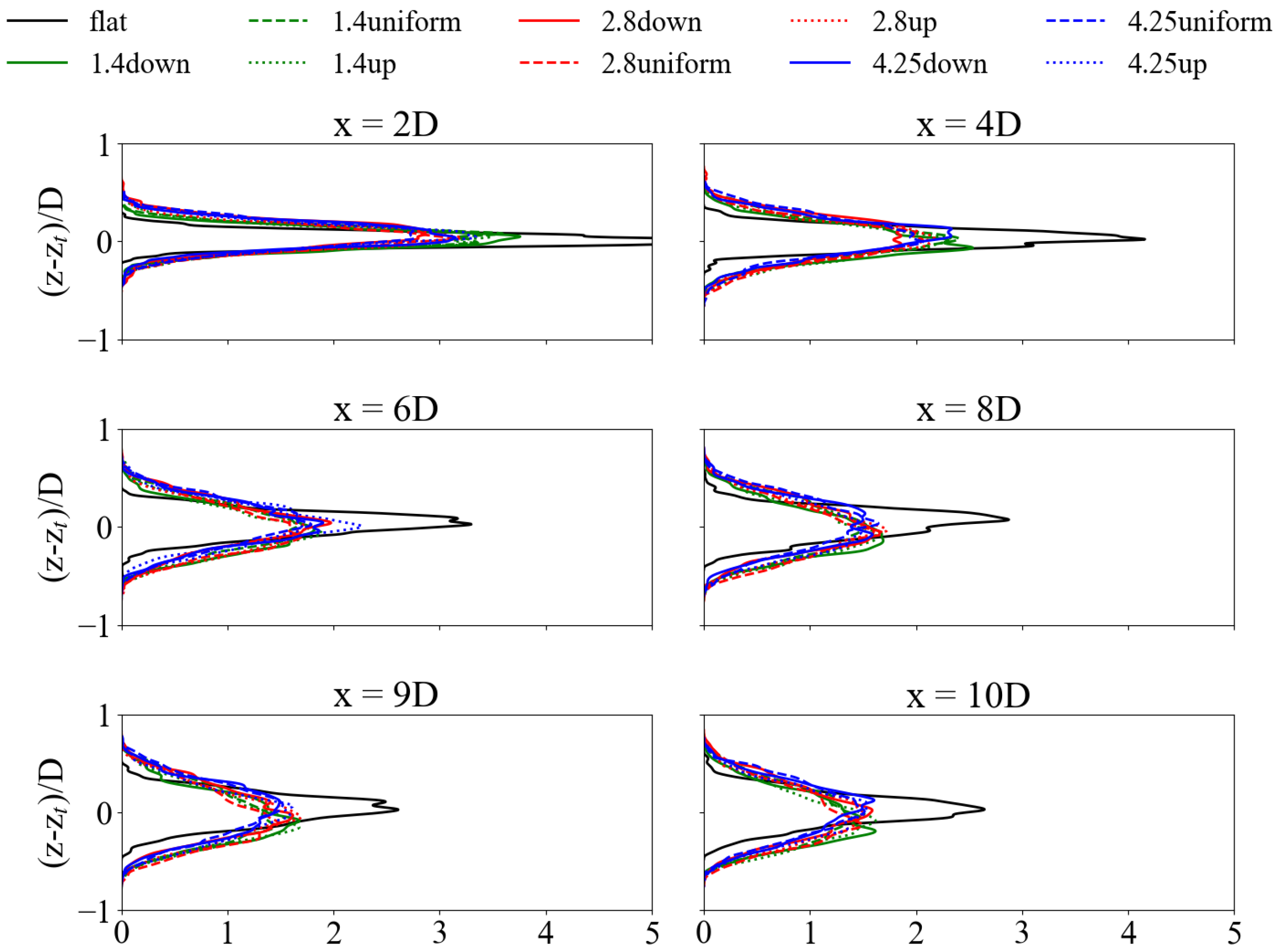
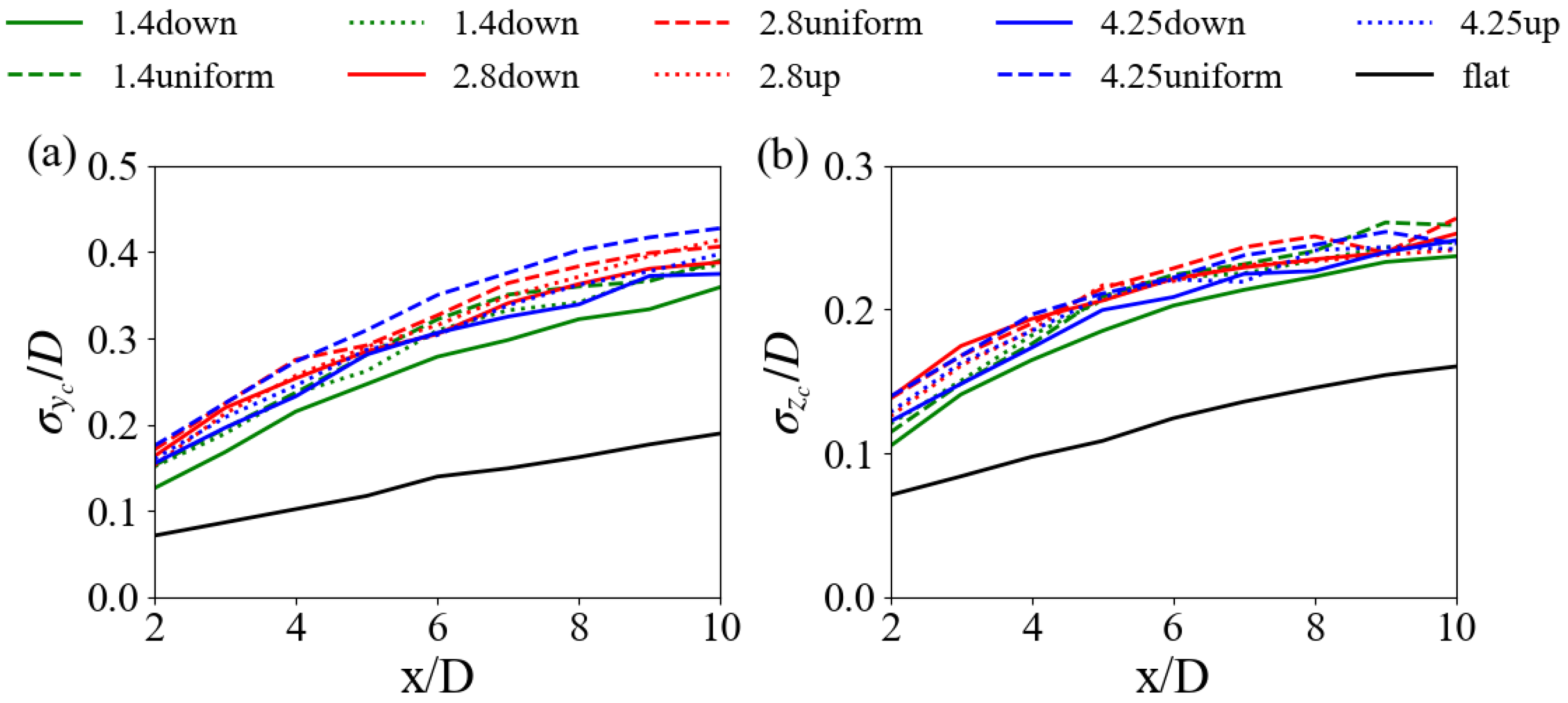
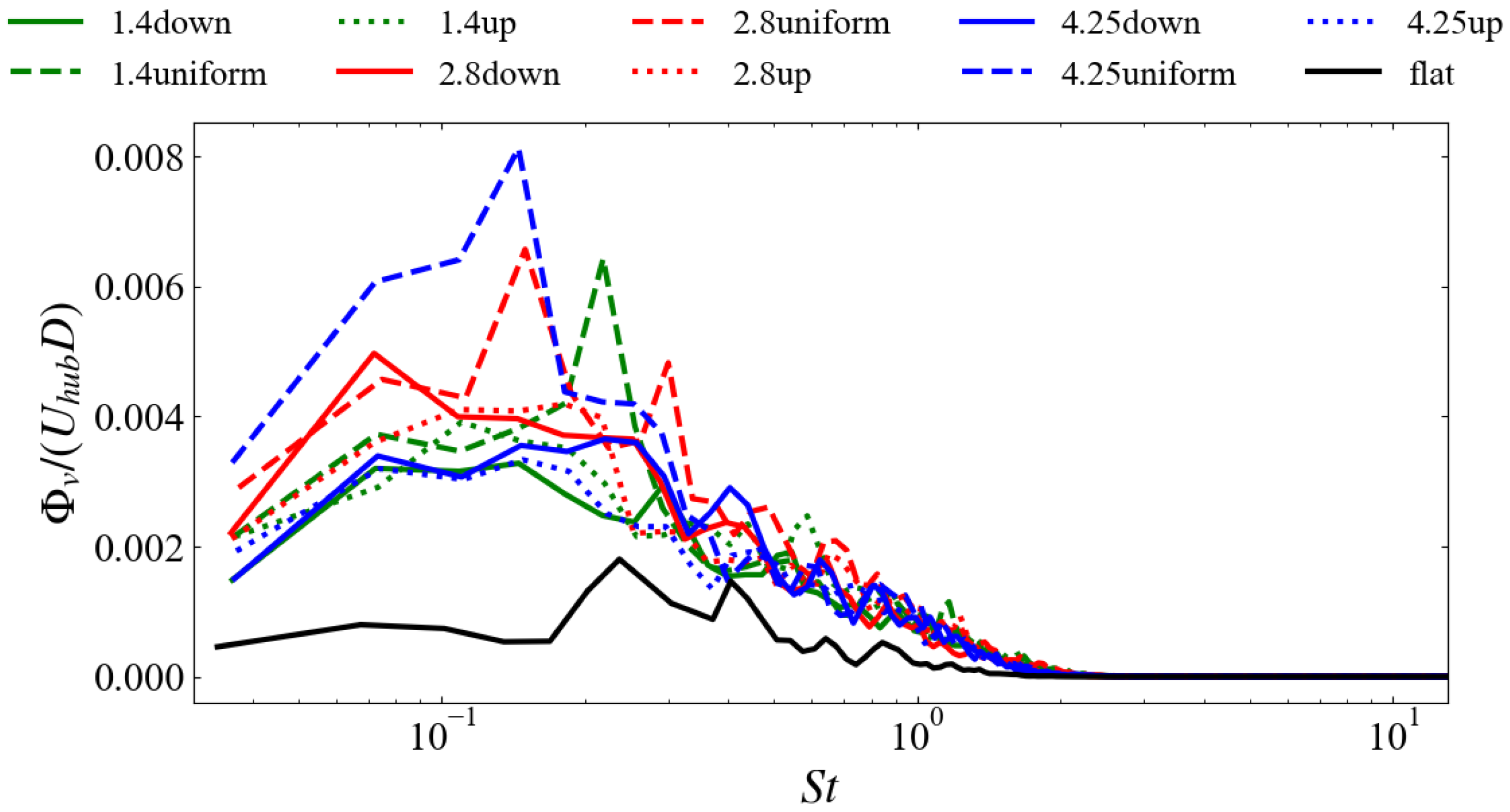
Disclaimer/Publisher’s Note: The statements, opinions and data contained in all publications are solely those of the individual author(s) and contributor(s) and not of MDPI and/or the editor(s). MDPI and/or the editor(s) disclaim responsibility for any injury to people or property resulting from any ideas, methods, instructions or products referred to in the content. |
© 2023 by the authors. Licensee MDPI, Basel, Switzerland. This article is an open access article distributed under the terms and conditions of the Creative Commons Attribution (CC BY) license (https://creativecommons.org/licenses/by/4.0/).
Share and Cite
Li, Y.; Li, Z.; Zhou, Z.; Yang, X. Large-Eddy Simulation of Wind Turbine Wakes in Forest Terrain. Sustainability 2023, 15, 5139. https://doi.org/10.3390/su15065139
Li Y, Li Z, Zhou Z, Yang X. Large-Eddy Simulation of Wind Turbine Wakes in Forest Terrain. Sustainability. 2023; 15(6):5139. https://doi.org/10.3390/su15065139
Chicago/Turabian StyleLi, Yunliang, Zhaobin Li, Zhideng Zhou, and Xiaolei Yang. 2023. "Large-Eddy Simulation of Wind Turbine Wakes in Forest Terrain" Sustainability 15, no. 6: 5139. https://doi.org/10.3390/su15065139
APA StyleLi, Y., Li, Z., Zhou, Z., & Yang, X. (2023). Large-Eddy Simulation of Wind Turbine Wakes in Forest Terrain. Sustainability, 15(6), 5139. https://doi.org/10.3390/su15065139






